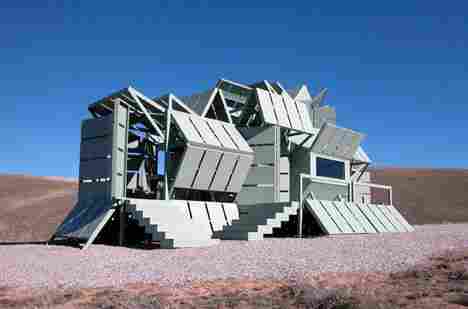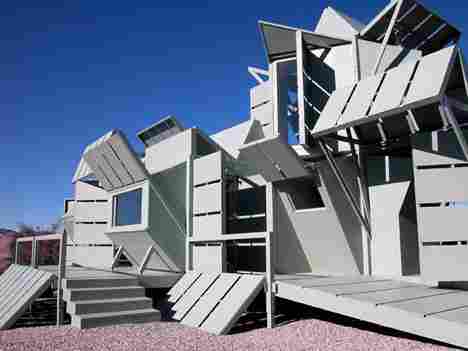Babylon is a sustainable building design which not only fulfils urban needs for more residential and office space in the city, but also promotes social and environmental sustainability in buildings of the future. By stacking a variation of lifestyles and functions, new social interactions can occur in the atrium, also a 3-dimensional park, which becomes a social space capable of nurturing new community relationships. With regard to environmental sustainability, the greenhouse function of the atrium not only saves energy and heating while providing natural ventilation, but illustrates the aesthetic and functional qualities that ecological buildings can have. In this way the main social space of the building is also its ecological core, and these two sustainable aspects are united and manifested in a single space. At a larger scale the compactness of the building frees up surrounding urban space for much-needed public spaces while also minimising traffic-related problems.
Architect: Mutopia
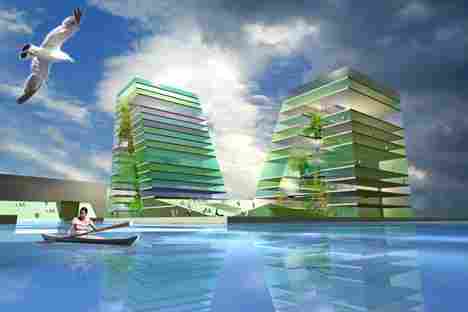
Live Media Scrapers
The design of UNStudio’s proposal for the Central Business District in Tongzhou, China is a dynamic composition created by introducing asymmetry in plan, orientation, clustering and facade treatment. This build-up of asymmetries has a far-reaching urban effect while simultaneously relating to users on a more personal scale. Six towers form three lively groups which interact according to a layered choreography that extends both below and above the surface. In relation to the ground and subterranean levels the towers are grouped in three pairs, each standing on a joint platform. As defined by the bridging connections between them, the towers are grouped as a couple, a trio and a single volume.
The silhouette of the towers is derived from a combination of substantial differences between the lower and the upper parts of the buildings and the binding together effects of diagonal wrappings. On the lower parts the towers are marked by dense stacking, whilst towards the top they become smooth and reflective. This textural contrast is mediated by the strong diagonals running the entire length of the towers.
The bridges have numerous roles. They help to cluster the towers and to form interconnections between them which can house many different semi-public functions. They also provide an artificial ground for users of the highest floors. From an urban point of view the bridges can also be read as the tops of large arches.
In addition to the application of active sustainable measures at different scale levels, passive design tools were incorporated from the initial design of the six towers and the podium clusters. Driving features are the winter gardens and green surfaces. Winter gardens are effective within the Tongzhou climate as during long periods of cold temperatures the greenhouse effect is beneficial for preheating indoor spaces. Green surfaces on the public roof and terraces are suitable for rain water harvesting, contribute to human well-being and create an elevated park.
To stimulate social and cultural interaction three large scale media screens are visible from the opposite bank. These are integrated with the winter gardens and the riverfront facade, visible also from the interior of the podium. The transport hub is also fully integrated within the site to ease traffic concerns. The transportation hub will provide convenience to those who work, live and visit the location.
With the asymmetry of the towers, the media facades and the well-located transport hub, this design aims to become the dynamic landmark of Tongzhou.
Designer: UNStudio
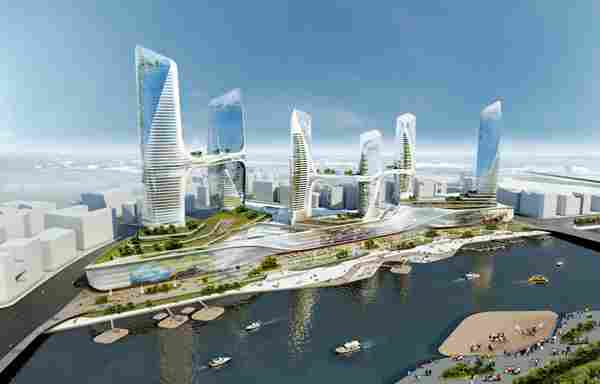
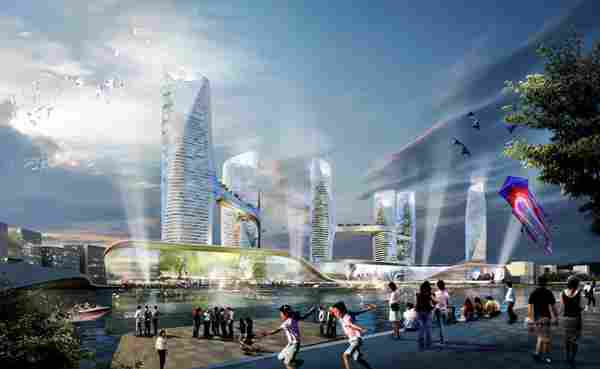
Sale: Michael Jantzen’s M-House
Architect Michael Jantzen is frequently featured on these pages, and now you can own one of the experimental designer’s most seminal works. Chicago’s Wright auction house will be selling off the M-house on March 25 (2007). More of an experimental pavilion than a conventional house, the M-House features a shifting faade of folding panels, allowing you to open the structure up to the landscape, or close yourself off, as the mood (and weather) permits. The buyer will get the house in flat-pack style, so they can erect it wherever they want.
Architect: Michael Jantzen [ Auction Page ]
